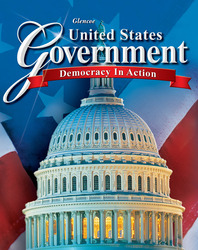United States Government: Democracy in ActionChapter 3:
The ConstitutionStudent Web Activity Lesson PlansIntroduction
In 1787 the Founders created a Constitution that could be adapted to an unknown future. One way they provided for change was to describe how Congress and the states could amend the Constitution. In this activity, students will learn about the amendment process, the history behind the amendments that were ratified, which amendments failed, and some proposed amendments. Lesson Description
Students will explore a Web site of the U.S. Constitution. They will read information about the amendment process and the 27 amendments to the Constitution. They will also read about amendments that failed, as well as some recently proposed amendments. Students will then create an annotated "Time Line of Amendments." Instructional Objectives
- Learners will trace the steps involved in proposing and ratifying a constitutional amendment.
- Learners will discuss the merits of failed and proposed amendments.
- Learners will analyze the historical circumstances surrounding the passage of the 27 existing amendments, and create a time line with a short summary of each amendment.
|
Student Web Activity Answers
- Both houses of the legislature have passed proposed amendments by a two-thirds majority in each. State legislatures in three-fourths of the states must ratify the proposed amendment by a simple majority.
- Social circumstances can change, and the judiciary—through its rulings—can change the interpretation of the Constitution.
- The selection of senators by state legislatures was full of corruption and bribery. The Seventeenth Amendment tried to make the selection more democratic by having senators elected by the people. Issues such as campaign finance arose after senators ultimately had to campaign before millions of constituents.
- Answers will vary. The failed amendments include one that dealt with the number of representatives as well as the number of persons represented by each representative, the Anti-Title Amendment, the Slavery Amendment, the Child Labor Amendment, the Equal Rights Amendment (ERA), and the Washington, D.C. Voting Rights Amendment. Students should select one failed or proposed amendment listed on the Web site to support.
- Time lines should include all 27 amendments and a short historical summary of each.
|
 | 




